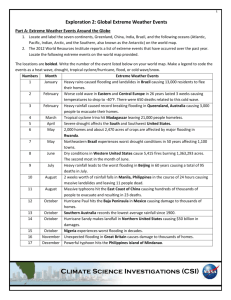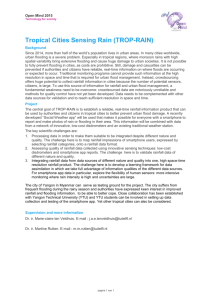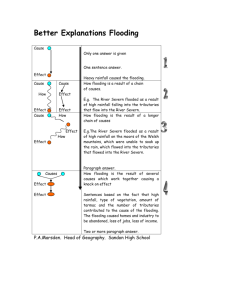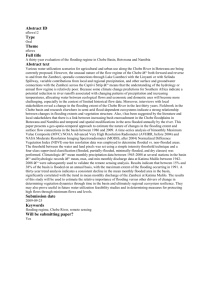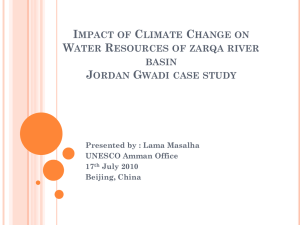RIVER WATER LEVEL PREDICTION USING AMSR
advertisement
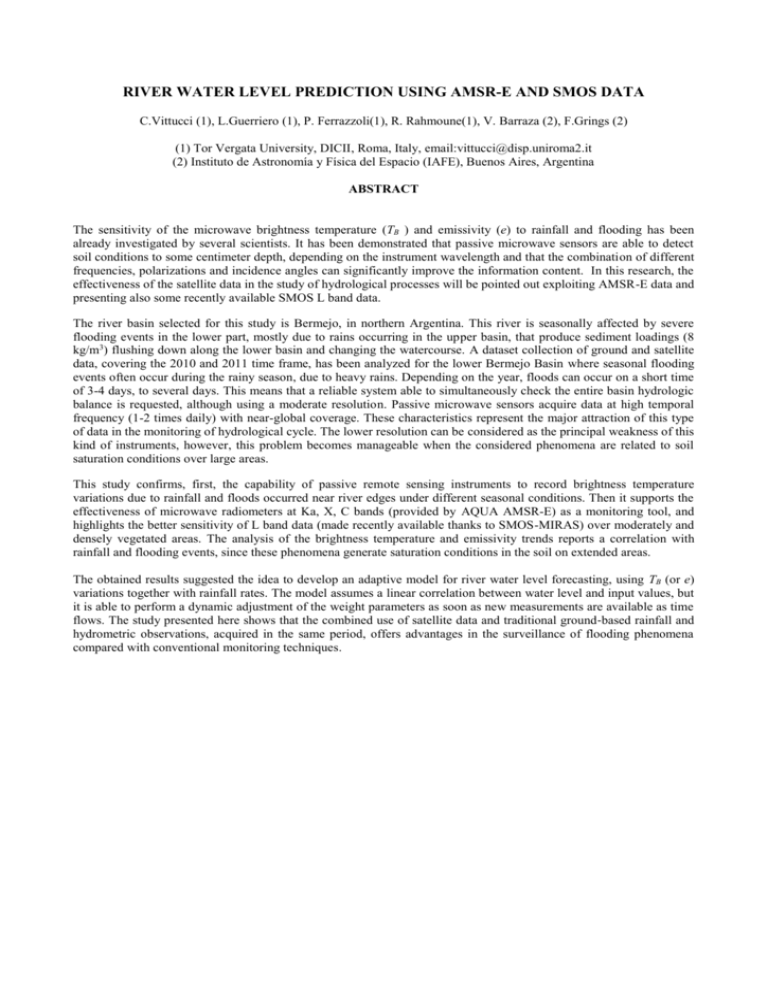
RIVER WATER LEVEL PREDICTION USING AMSR-E AND SMOS DATA C.Vittucci (1), L.Guerriero (1), P. Ferrazzoli(1), R. Rahmoune(1), V. Barraza (2), F.Grings (2) (1) Tor Vergata University, DICII, Roma, Italy, email:vittucci@disp.uniroma2.it (2) Instituto de Astronomía y Física del Espacio (IAFE), Buenos Aires, Argentina ABSTRACT The sensitivity of the microwave brightness temperature (TB ) and emissivity (e) to rainfall and flooding has been already investigated by several scientists. It has been demonstrated that passive microwave sensors are able to detect soil conditions to some centimeter depth, depending on the instrument wavelength and that the combination of different frequencies, polarizations and incidence angles can significantly improve the information content. In this research, the effectiveness of the satellite data in the study of hydrological processes will be pointed out exploiting AMSR-E data and presenting also some recently available SMOS L band data. The river basin selected for this study is Bermejo, in northern Argentina. This river is seasonally affected by severe flooding events in the lower part, mostly due to rains occurring in the upper basin, that produce sediment loadings (8 kg/m3) flushing down along the lower basin and changing the watercourse. A dataset collection of ground and satellite data, covering the 2010 and 2011 time frame, has been analyzed for the lower Bermejo Basin where seasonal flooding events often occur during the rainy season, due to heavy rains. Depending on the year, floods can occur on a short time of 3-4 days, to several days. This means that a reliable system able to simultaneously check the entire basin hydrologic balance is requested, although using a moderate resolution. Passive microwave sensors acquire data at high temporal frequency (1-2 times daily) with near-global coverage. These characteristics represent the major attraction of this type of data in the monitoring of hydrological cycle. The lower resolution can be considered as the principal weakness of this kind of instruments, however, this problem becomes manageable when the considered phenomena are related to soil saturation conditions over large areas. This study confirms, first, the capability of passive remote sensing instruments to record brightness temperature variations due to rainfall and floods occurred near river edges under different seasonal conditions. Then it supports the effectiveness of microwave radiometers at Ka, X, C bands (provided by AQUA AMSR-E) as a monitoring tool, and highlights the better sensitivity of L band data (made recently available thanks to SMOS-MIRAS) over moderately and densely vegetated areas. The analysis of the brightness temperature and emissivity trends reports a correlation with rainfall and flooding events, since these phenomena generate saturation conditions in the soil on extended areas. The obtained results suggested the idea to develop an adaptive model for river water level forecasting, using TB (or e) variations together with rainfall rates. The model assumes a linear correlation between water level and input values, but it is able to perform a dynamic adjustment of the weight parameters as soon as new measurements are available as time flows. The study presented here shows that the combined use of satellite data and traditional ground‐based rainfall and hydrometric observations, acquired in the same period, offers advantages in the surveillance of flooding phenomena compared with conventional monitoring techniques.


